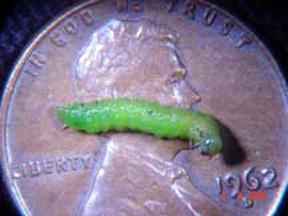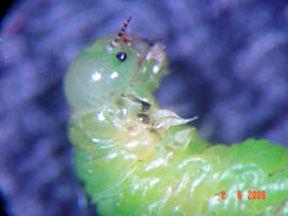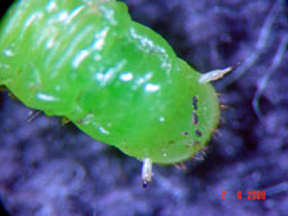Unique webspinning sawfly larvae found on Viburnum
Editor’s note: This article is from the archives of the MSU Crop Advisory Team Alerts. Check the label of any pesticide referenced to ensure your use is included.
Last week Mary Wilson and Charlene Molnar from the Oakland county Extension office sent us some very interesting sawfly larvae that a client of theirs found feeding on their Viburnum. These were not your typical sawfly larvae one sees feeding on the foliage of many of our trees and shrubs. These sawflies belong to the family Pamphiliidae, the webspinning sawflies. We’ve had pamphiliids come in on pine before, but never from a deciduous tree or shrub. Pamphiliid larvae are characterized by their non-existent abdominal prolegs, seven segmented antennae and most notably, a pair of sub anal appendages located on the last abdominal segment.

The webspinning sawfly larva found on Viburnum.
Little is known about most species of pamphiliids. A few species are reported to be important pests of pines, peach and occasionally oaks. The larvae live solitarily or gregariously in a web or rolled leaf. The most unique feature of pamphiliids is the way they move about. They construct a zig-zag trellis of silk under which they wiggle forward with aid of their pointy thoracic legs and sub anal appendages. They have no prehensile structures to keep them from falling and are completely dependent on their silken trellises.

A close up of the head and thorax.
Pampiliids comprise a very small family of sawflies with only 72 species in North America. Most species are uncommon. Pretty darn cool bugs!

A close up of the subanal appendages.
Related Source:



 Print
Print Email
Email


